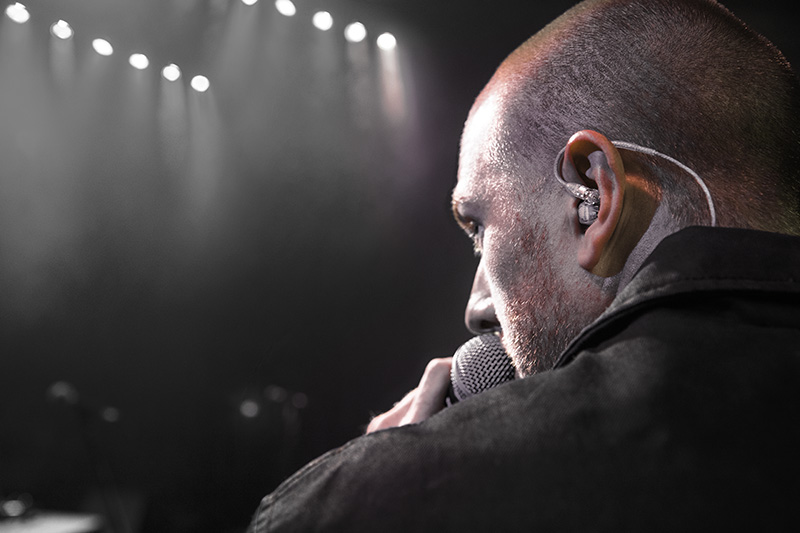Shocking Life-Changing Methods: How to Set Up In-Ear Monitors for Band?
In the exhilarating realm of live music, the significance of audio clarity cannot be overstated. Many bands are increasingly turning to **in-ear monitors** to enhance their sound experience, yet setting them up can seem daunting. This article will guide you through the process of how to set up in-ear monitors for band, ensuring that every note is heard perfectly, and every performance is a memorable one.
Whether you are a seasoned professional or starting your musical journey, mastering the technique of setting up in-ear monitors will be **life-changing**. Understanding the mechanisms involved enhances not only sound clarity but also allows for proper music mixing, creating a **delighted** experience both for performers and their audiences.

Understanding In-Ear Monitors: The Game-Changer
Before diving into the setup process, it's crucial to grasp what in-ear monitors (IEMs) are and how they function in live settings. Unlike traditional stage monitors that amplify sound for everyone on stage, in-ear monitors deliver personalized audio directly into the musician's ears. This differs dramatically by providing a cleaner sound and allowing for mobility on stage.
For a deep dive into in-ear monitors, you can check out this article on in-ear monitors.

Choosing the Right Equipment
Setting up in-ear monitors begins with selecting appropriate equipment. Generally, you will need:
- A pair of **in-ear monitors**: Choose based on sound quality and comfort.
- A transmitter and receiver system: This will allow the musician to receive audio wirelessly.
- Mixing console: Essential for adjusting the audio levels for each performer.
To ensure the **remarkable** sound quality, pick high-quality IEMs such as those produced by Shure or Sennheiser.

How to Set Up In-Ear Monitors for Band
Here are the steps to configure your in-ear monitors successfully:
Step 1: Initial Setup
Start by connecting the mixer output to the IEM transmitter. Ensure that all cables are connected securely. Make use of reliable cables to avoid interruptions during live shows.
Step 2: Configuring the Mixing Console
On your mixing console, assign different mixes to the band members. Each member should have one or more channels that suit their preferences. Consider using this guide to understand channel routing better.
Step 3: Setting Up Wireless Connectivity
With the IEM transmitter connected to the mixing console, set the transmitter to a clear radio frequency. Check for interference from other devices and select a stable frequency. The receiver will then pick up this frequency.
Step 4: Monitors Fitting
Now you need to ensure that the monitors are positioned correctly in each band members ear. A great fit is critical to prevent sound loss and feedback. If you're facing issues with them falling out, you can reference this article on keeping monitors in.

Tuning In Your Sound
Once the physical setup is complete, its time to fine-tune your mixes. Always aim for clarity in vocals and instruments. Perform sound checks with each band member to identify the ideal volume and sound balance. You may find this guide on using monitors helpful during tuning.
Frequency and Volume Management
Monitoring the frequency of your in-ear monitors is essential. Check for clarity and adjust levels accordingly, as each band member may prefer different volume levels. Keep in mind that it can be easy to have volume levels too high, which can damage hearing, especially in prolonged performances.
Common Issues and How to Solve Them
Working with in-ear monitors can present challenges. Here are some common problems and solutions:
- Signal Interference: Ensure that your transmitter is not placed too close to other electronic devices.
- Insufficient Volume: If someone can hardly hear their mix, check settings on the mixing console and transmitter.
- Poor Fit: For issues related to the fit, consider the use of different ear tips or custom molds.
Final Thoughts
Mastering how to set up in-ear monitors for band is crucial for true musical excellence in variety-filled live performances. Not only does it provide the performers with a personalized experience, but it also enhances their capability to project their sound in harmony with the band on stage.
In summary, invest in good quality equipment, ensure proper settings, and maintain regular checks before performances. Implement these steps rigorously, and both the band and the audience will surely be **terrific** and appreciative.
Lastly, if you wish to know more about how IEMs function, this resource on how IEMs work can provide deeper insights.
FAQs
1. How do I prevent my in-ear monitors from falling out?
Ensure a proper fit by trying different ear tips or considering custom molds designed for your ears.
2. Can I use in-ear monitors without a mixing console?
In-ear monitors are most effective with a mixer to provide personalized sound. However, there are some systems that allow direct connections.
3. What should I do if I experience sound interference?
Check the transmitter's location and switch to a clearer frequency to mitigate interference.
As an Amazon Associate, I earn from qualifying purchases.

